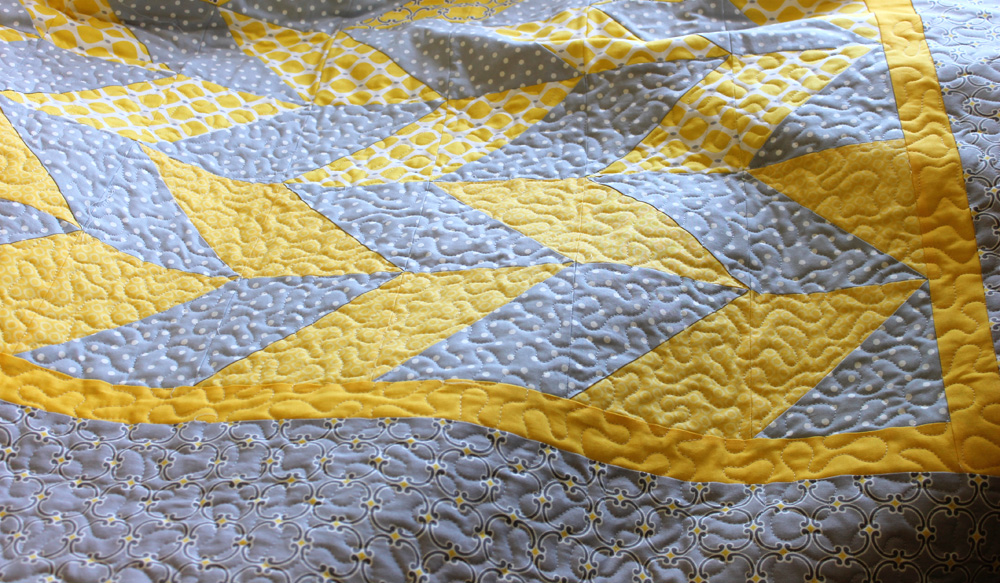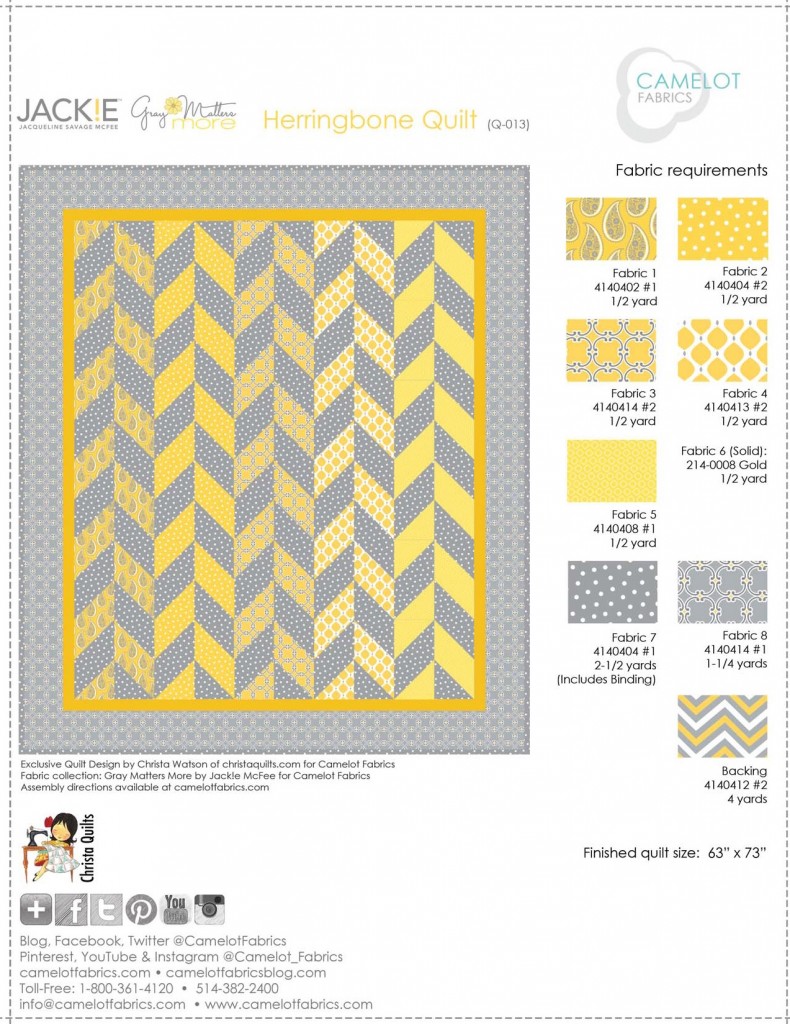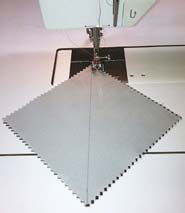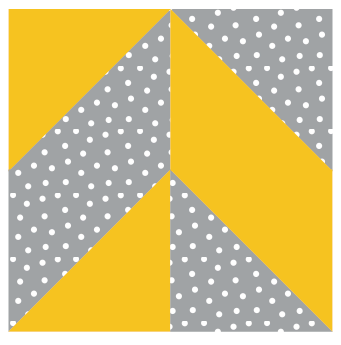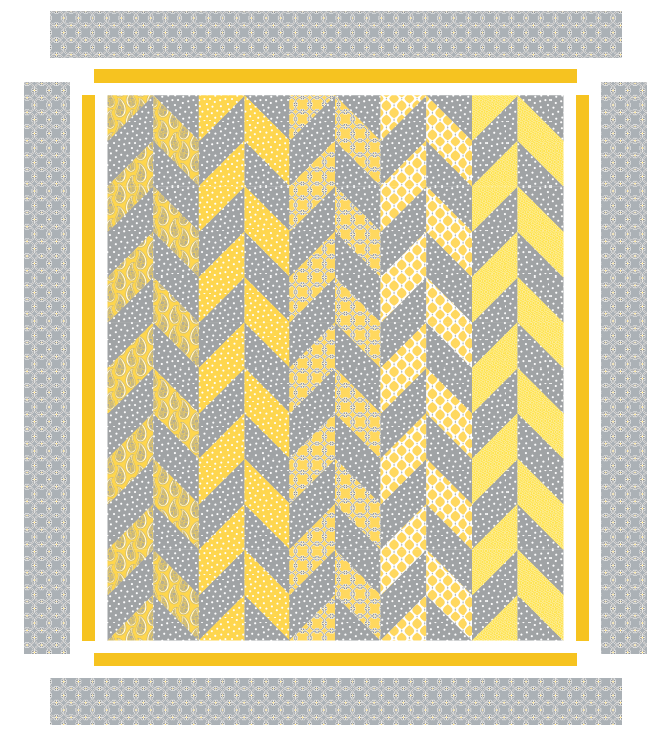How To’s Day: Herringbone Quilt by Christa Quilts for Camelot Fabrics
April 22nd, 2014 by Camelot Fabrics
Hi everyone!
Happy Tuesday everyone! We hope you all had a wonderful, blissful, and relaxed long weekend filled with love, family time, and chocolate :) As well, Happy Earth Day! We always try to do our part to help out our planet as much as we can, and sometimes it’s the little things that make a big difference. For example, using a reusable tote at the grocery store, reusing fabric napkins, and a fun fabric ring stacking toy game are some ways you can “stay green” too! Any of our DIY projects are some easy ways to be crafty and use/reuse some fabric in your stash! :)
It’s time for this week’s How To’s Day! Today we are sharing another of our quilt patterns from one of our quilt designers, Christa Watson of Christa Quilts. The Herringbone Quilt, featured with our Gray Matters More by Jackie McFee Collection, is a very classic and clean design. This quilt would look spectacular with just about any fabric collection, but it features our gray- and yellow-hued collection perfectly by showcasing all the designs in a lovely uniformed manner.
Christa showcased this quilt on her blog, with a couple of really great tips, including how to work with directional fabric! We love this post because it really helps fine-tune the details of a finished quilt’s look. We are also very excited because this will be one of our featured quilts at Spring Quilt Market – we cannot wait to showcase it at the show because we know it will surely be a showstopper!
You can check out the free printable PDF of this quilt pattern on our website, but we are going to break it down for you in this post. We hope you enjoy! Click MORE to see the rest!
Herringbone Quilt for Camelot Fabrics
Design and Instructions by Christa Watson of ChristaQuilts
Finished size: 63” x 73”
Supply List and Cutting: all measurements are based on 42” useable width of fabric (WOF).
All yardage is rounded up to the next 1/4 yard.
Other Supplies: Rotary Cutter, Mat, Rulers, Straight Pins, Sewing machine, and threads to match your fabrics.
The Design
This quilt is made from 120 half square triangle units (HST’s) with a finished size of 5” x 5”. The HST’s are cut slightly oversized and then trimmed down for ease in sewing. Each of the 5 rows of herringbone blocks is made from a different yellow print with the same gray background fabric. Yellow and gray borders complete the look.
Step 1 – Marking and Sewing The Squares
a) Use a straight edge to draw a diagonal line down the center of the wrong side of each gray square from one corner to the other. You will repeat this for a total of 60 squares of gray #1.
b) Pair up each grey square with a yellow square (yellow #1-#5), right sides together. You should have a total of 60 pairs of gray/yellow squares.
c) Sew with the gray square on top so you can see your lines:
d) Sew ¼” away from the marked line on either side. For quick assembly, chain piece your units by sewing all of the right hand seams on each fabric pair without clipping threads in between each pair. Then go back and sew all of the left hand seams.
Step 2 – Press and Trim the Half Square Triangles
a) Cut all of your squares on the marked line and open them up. Press seam allowances toward the grey fabric. Each pair will yield two HST’s that look like this:
b) You should have a total of 24 HST’s for each yellow/grey color combination. If needed, trim your squares so that they measure exactly 5 ½” x 5 ½”. Use a ruler with a 45 degree line aligned with the center seam of each block while trimming.
Step 3 – Sewing the Herringbone Blocks
a) Rotate four of the same HST units, and sew them together following the diagram below:
b) Continue to press the seams towards the gray fabric as you join the HST units together. Press the center block seam open to reduce bulk. Repeat for a total of 30 Herringbone blocks.
c) You should have 5 different yellow/gray color combinations of 6 blocks each. They should each measure 10 ½” unfinished. If you blocks are larger or smaller, that is okay, as long as they are the same size. Square up your blocks if needed.
Step 4 – Sewing the Rows
Join 6 Herringbone blocks of the same fabric combination together into a vertical column. Repeat so that you have a total of 5 yellow/gray rows that look like this:
Step 5 – Complete the Quilt Top
a) Join all of the vertical rows together to complete the inner quilt. Then add borders. Join strips of yellow #6 into a total of 4 long border pieces. Measure the sides of your quilt and cut 2 yellow strips the same length. They should measure approximately 60 ½” unfinished. Sew the side borders on and press.
b) Measure the width of the top and bottom of your top with the inner side borders attached. It should measure 53 ½”. Cut 2 yellow strips the same length and sew to the top and bottom of your quilt.
c) Add the outer borders in the same manner by measuring the sides, trimming to length and sewing. The side borders should be trimmed to a length of approximately 63 ½”. Sew these borders on first. The top and bottom borders should also be trimmed to a length of 63 ½”. Sew them on to complete the top.
d) Join the borders according to the diagram below:
Step 6 – Finishing the Quilt
a) Remove selvedges from backing fabric and join two lengths of fabric together with a ½ inch seam, parallel to the selvedge. Press seams open. Backing piece should measure approximately 72” x 80”. If you are using directional fabric with extra yardage your backing piece will be 80” x 90”.
b) Layer and baste according to your favorite method. If you will be quilting on a home machine, a low loft high density cotton batting works best to reduce bulk and eliminate shifting of the layers while quilting.
c) Quilting suggestion: use a thin 50 weight high quality cotton thread in a light grey color in both top and bobbin. Quilt an all-over jagged stipple design over the surface of the quilt, crossing over previous lines of stitching with additional straight or triangular shaped lines. This will enhance the angular nature of the piecing.
And there you have it! We hope you have enjoyed this week’s tutorial. Be sure to follow along on the Herringbone quilt being sewn by Christa Watson on her blog. As well, you can find lots more on her website and Facebook! Have a good one!
Happy Sewing!
Comments are closed.
